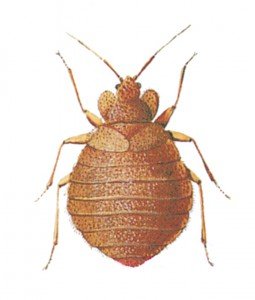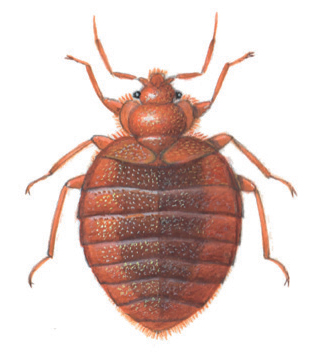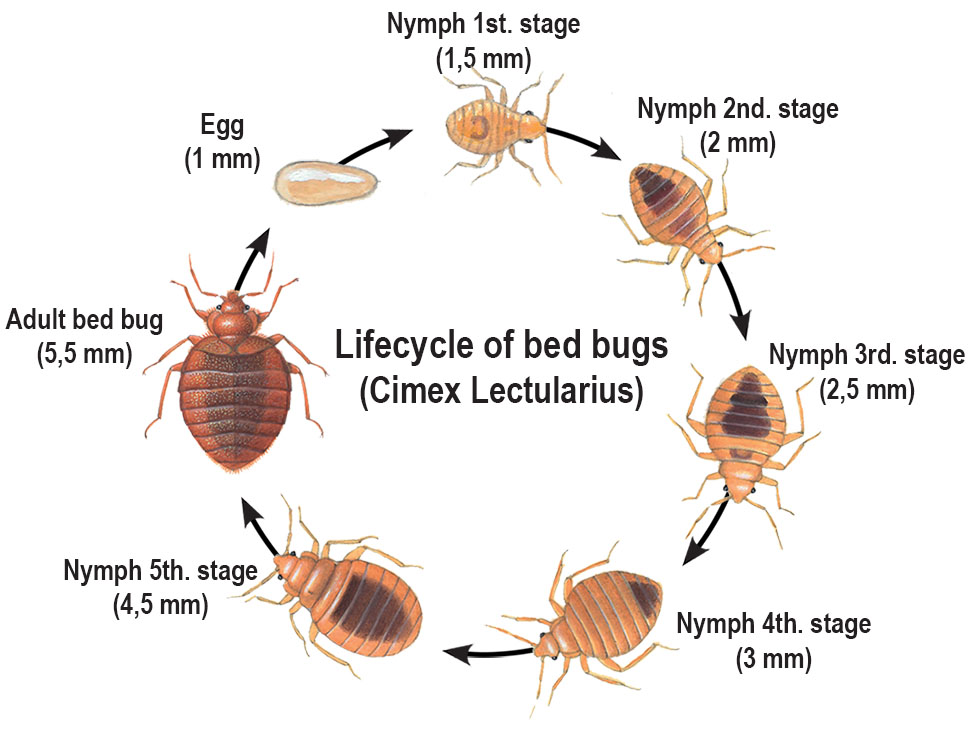(Latin: Cimex lectularius)
Unlike most other bugs, the bed bug is wingless. When it has not recently fed its body is paper-thin, and almost red-brown. So far as is known bed bugs originated from Asia, but they have now spread to all parts of the world. They were well known in ancient times in the Mediterranean area. As they require a warm, dry climate they did not spread to northern regions until buildings started to be heated more or less efficiently, but when this did happen they soon became very abundant. They are now less common and are largely kept under control by modern insecticides.

Bed bugs only search for blood donors when they are actually hungry. In the intervals between meals they spend their time in suitable hiding places in the vicinity of the bed. This may be crevices in timber, joints in the bed, beneath loose carpeting, and behind pictures and wall- paper. When hungry, bed bugs come out from their retreat and start to search. Their senses are not capable of guiding them to a distant blood donor, but at distances of 5-10 cm they will be attracted by the body warmth of the victim.
Bed bugs can crawl up a wall and can also walk upside down on rough ceilings, but if they are not skilled they often fall down. This is the basis of stories that bed bugs, having observed that their victim had placed the legs of the bed in dishes of water, crawled up the wall and along the ceiling and let themselves fall on to the poor sleeping victim. However, the bed bug is not as crafty as this.
In the course of about 10 minutes an adult bed bug can suck up to 7 times its own weight in blood. It then retreats to its hiding place, where it digests, mates and lays eggs until it is hungry again.
The eggs are laid in the hiding place, where they are attached to the substrate. A female lays a total of 200 eggs, 4-5 per day, but the actual number depends upon the temperature and other external factors. They do not reproduce at all at temperatures below 10° C.
Young bed bugs are like small versions of the adults. They moult 5 times during their development and at each stage they require a new meal of blood.
Bed bugs can be controlled by thorough treatment of their hiding places with an insecticide.
Some of the vertebrates with which we more or less voluntarily share our homes are also attacked by other bugs which live in the vicinity of their nests or sleeping quarters. These bugs are often bed bugs. Sometimes they move about and enter houses, and in rare cases they may attack humans.






